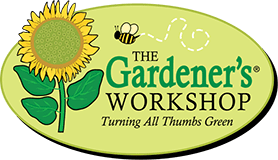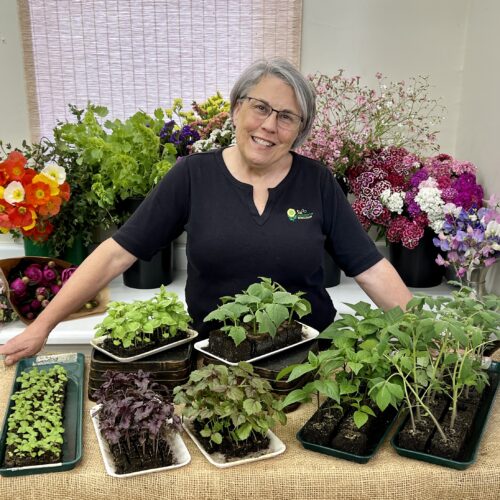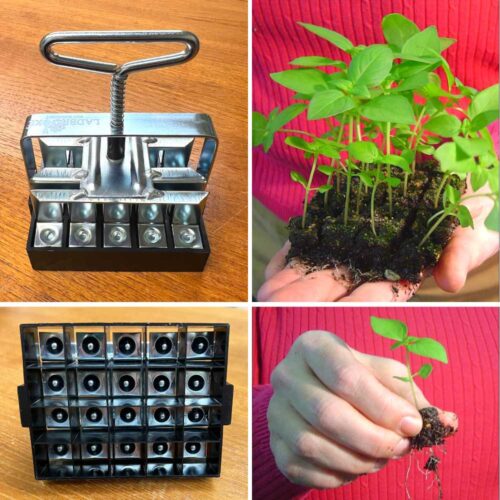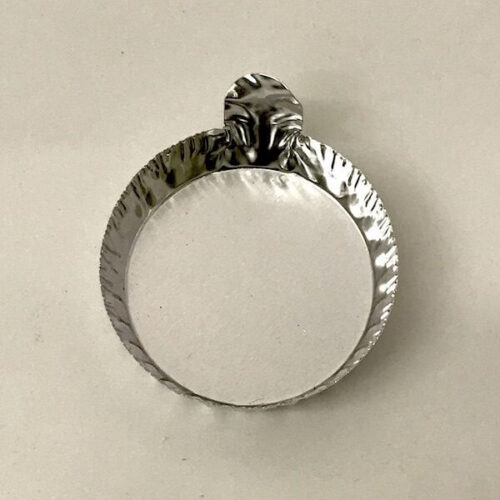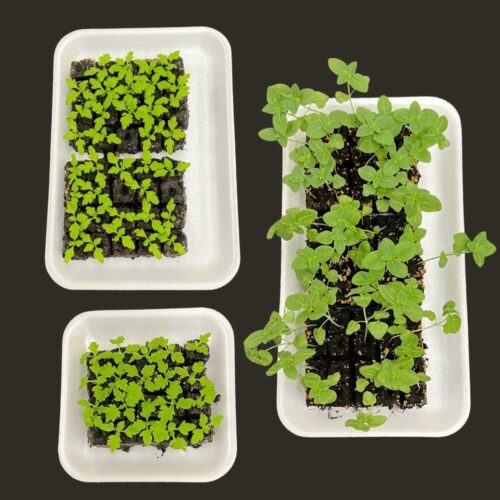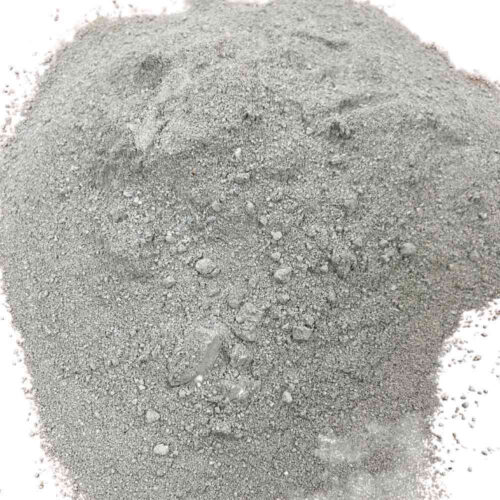Mulching Mania!
From my June TGW Fresh from the Garden Newsletter:
One of the tips I share in my lectures that most folks already know a little about but often don’t have the whole story on is mulching. This garden chore many of us think of as the finishing touch that makes the garden look nice. But it is really about, oh, so much more.
Mulching in fact protects the most important gem in the garden, the soil. Mulch helps to keep the soil cool and moist and prevents it from washing away. Soil without mulch gets dry, hard, and weedy. In general, it’s nothing you’d want to put your roots down into!
I love pulling back the straw mulch in my working cutting garden come spring. It is like a cartoon picture. All the heads of these little earthworms are poking out of the surface of the bed like submarines. It is hilarious-looking. Mulching provides cover for these good guys to come to the surface to work in your garden (earthworms, ground beetles, micro-organisms and millions of their beneficial friends). All of this will go on in your garden to benefit your soil. If you become a mulching maniac, your soil will keep your plants healthy, fat and sassy. It will all come naturally when you maintain organic mulches, and it’s free!
But, wait– there are even more benefits to mulching! When applied in a timely manner, mulching prevents future weeding chores. Before I give you the lowdown on what we do in our garden to prevent weeds with mulch, you need to know a couple of facts about weeds and their seeds.
- The bad news first–weed seeds can live longer than most of us.
- Each time you disturb the soil or turn over a fresh shovel of soil, you bring up a fresh crop of weed seeds and provide them with what they have waited years for: light, water and air. And a weed is born.
- Each shovel of soil is full of weed seeds. Because of their incredible staying and waiting power, we will never run out of weed seeds to germinate in our landscapes and gardens.
- Weeds spread by a couple different ways; annual weeds grow a flower and make seeds to spill in your garden to make more weeds and perennial weeds return year after year from a root.
- Every time you remove a weed, you are potentially removing thousands of future weeds.
So here in a nutshell is our practice and recommendation for the most benefits and the lowest possible long-term maintenance of the garden.
- Mulch immediately after planting. This means if you spend Saturday morning planting, you should spend Saturday afternoon mulching. If you wait until next week to mulch, those weed seeds you brought to the surface during planting will have enough of a head start on sprouting to push through the mulch you put down later. If you mulch that afternoon, most of those weed seeds will never sprout because you blocked their light. By just changing the sequence of doing your chores you can eliminate the majority of your annual weeds.
- Use several sheets of wet newspaper under your mulch. Use the black and white print, unfold, and fill a wheel barrow half way with water. Submerge the stack of paper, using 5-6 sheets at a time and lay in the garden overlapping stacks a few inches. Top with your choice of organic mulches. The paper helps to suppress weeds, is bio-degradable, is easy to plant through and is free.
- We use any organic matter that we are fairly sure has not been sprayed or treated: leaves, pine needles, pine bark, grass clipping, straw, hay and compost. These products are what are available in our area; use what is available in your area. I do not chop our leaves; I use them mostly in the pathways of our garden but also use them in our beds without problem.
We find that planting plants and mulching immediately and deeply is the real key to low maintenance.
However, if you can’t mulch right away as happened to us this year or if you plant seeds in your garden instead of plants, here are the steps to take:
1. When planting seeds in the garden, mark the spots with ID tags. You will soon forget where you planted the seeds and once the weed seeds start growing it is impossible to identify your seedlings and to stay on top of weeding.
2. Plants are large enough to mulch when they have reached 8-12” tall.
3. Immediately before mulching, you need to do a little soil disturbing. This stops any weed seeds in their tracks that may be sprouting even before they are visible to the eye. We do this chore quick and easy with our Swiss hoes, the razor hoe doing a fine job because of its longer blade that easily slides between plants and covers a wider path than the garden hoe. We then proceed as outlined above.
